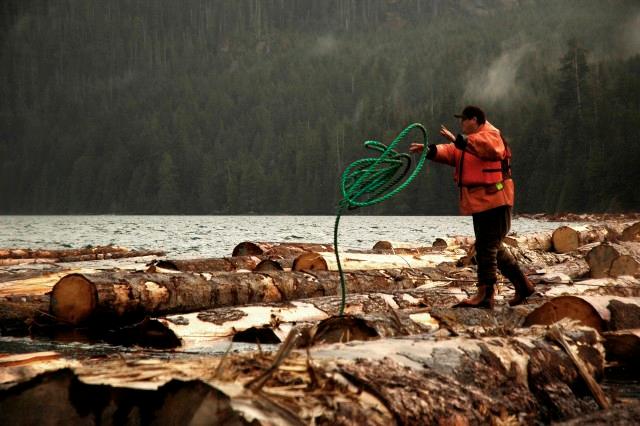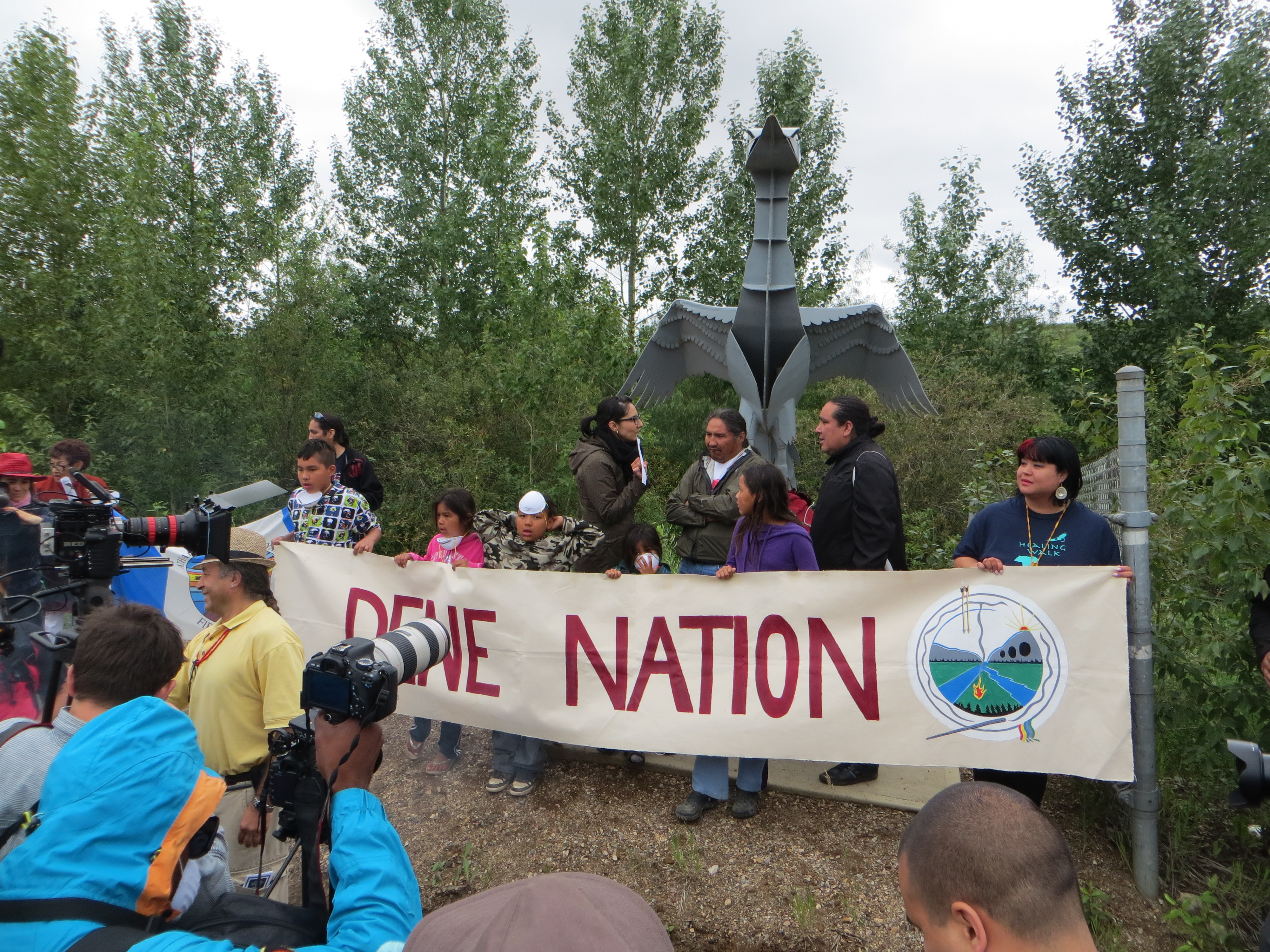Tagish peoples, also known as the Carcross/Tagish First Nation, are Indigenous peoples in Canada. The Carcross/Tagish First Nation in located in Carcross, Yukon, and has been self-governing since 2006. According to the Government of Canada, there were 708 registered members of Carcross/Tagish First Nation in 2021.

Traditional Territory
The Tagish were traditionally centered around a series of lakes forming part of the Yukon River headwaters that drain the interior plateau in northern British Columbia and southern Yukon. Their main 19th-century settlement was Tagish, at the junction of Tagish and Marsh Lakes. However, they did not live there year-round because of the requirements of their seminomadic subsistence cycle. The location of the town of Carcross was, in fact, the seasonal hunting grounds for caribou.
The White Pass and Yukon railway, extending from Skagway through Carcross to Whitehorse, was completed in 1900. Attracted by the railway, after 1900, most Tagish, descendants of the Tagish and the Inland Tlingit from southeast Alaska, began to live permanently in Carcross. However, some remain at Tagish and others in Whitehorse. The Chilkoot Trail was a trading route of the Tagish and remains as part of Carcross/Tagish First Nation territory. (See also Indigenous Territory.)
Early Economy
Traditionally, the Tagish were boreal forest hunters and fishers. By about 1800, however, the near extinction of the coastal sea otter, owing to the fur trade, led to a demand for fine land animal furs from the interior. The Tagish increased their own trapping activities, including trade with the Tlingit between the coast and interior. They also acted as middlemen between Dene peoples farther inland and Coast Tlingit traders who, until shortly before the Klondike Gold Rush (1898-1899), prevented the Tagish from crossing the mountain passes to trade directly with Europeans. The Klondike gold discovery was made by George Carmack, an explorer who was prospecting in Tr'ondëk Hwëch'in (Han) country with a party of Tagish with whom he had been living. Today most Tagish are wage earners, although they still garner food from the land.
Language
Most ancestors of the Tagish originally spoke a dialect of Tagish-Tahltan-Kaska, part of the Dene language family. However, in the 19th century, fostered by the growing fur trade and subsequent gold rush, the Tagish gradually adopted Tlingit speech. This was the result of intermarriage with Coast Tlingit and the partial movement of two coast clans, the Wolf (Eagle) and Crow (Raven), into the interior.
Today, most Tagish speak English. According to the Carcross/Tagish First Nation, there are few individuals who still have some knowledge of the Tagish language. Angela Sidney, a well-known Tagish storyteller awarded the Order of Canada 1986, was the last fluent Tagish speaker. She died in 1991, leaving behind several publications, part of a growing body of published texts from Indigenous peoples in the Yukon.
Cultural Life
Tagish and Tlingit cultures are matrilineal, meaning they follow female lines of descent. The Carcross/Tagish comprise six clans; two of the six are part of the Wolf and the four descend from the Crow.
In the late 19th century, each Tlingit clan segment built a Coast-style house at Tagish, embellished with clan crests. The Tagish also incorporated Tlingit concepts of rank associated with a fixed collection of personal names. These names were believed to be renewed each generation through reincarnation, and were supported by elaborate memorial potlatches.
(See also Architectural History of Indigenous Peoples in Canada.)
The Tagish still sustain a rich collection of oral literature, singing and dancing that reflects social etiquette, morals and traditional teachings.
Contemporary Life
Although maintaining their traditional heritage, modern Tagish have become successful big game guides, pilots, government workers, health professionals, anthropologists or hold other wage earning jobs. Tagish leaders have also taken the initiative in seeking adequate social services for both peoples with and without status. (See also Indian Status.)
The Tagish helped to develop the Council for Yukon Indians (now the Council for Yukon First Nations). This organization sponsored land claims negotiations leading to a final settlement in 1993. Thirteen years later, in 2006, the Carcross/Tagish First Nation became self-governing.

 Share on Facebook
Share on Facebook Share on X
Share on X Share by Email
Share by Email Share on Google Classroom
Share on Google Classroom




